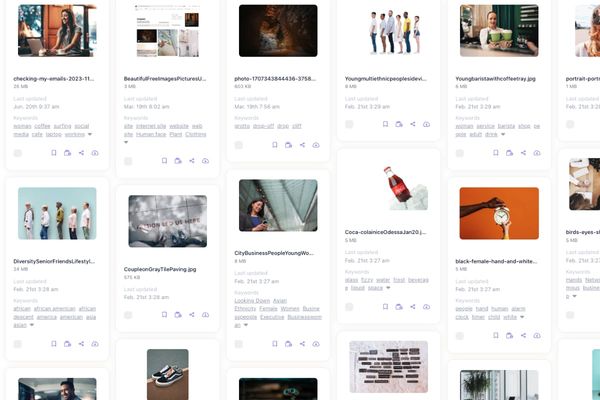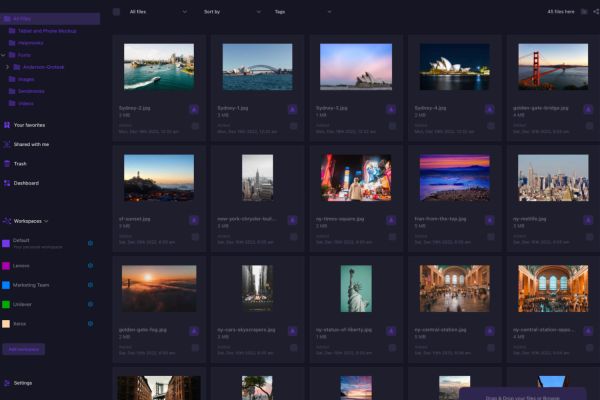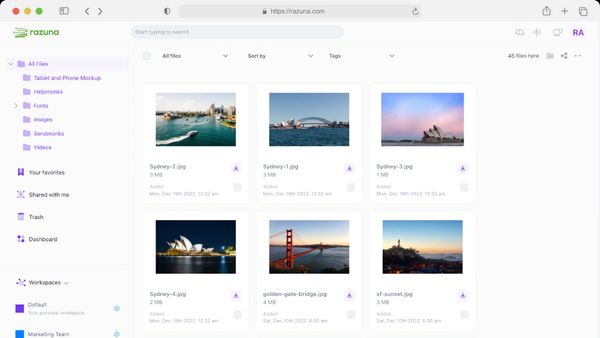
What Is Digital Asset Storage?
What is digital asset storage? This guide to digital asset storage has all the answers. Learn how to implement digital asset storage for all your teams.
Read nowIn an industry that deals with a large amount of high-volume files, media asset management software is a must-have in any team.
A media asset manager stores and organizes these valuable files, making them easily accessible for members of a production team.
Keep reading to find out more about what a media asset manager does and its key features.
A media asset refers to a digital asset or piece of data that you own or control as a business. This can be anything from a graphic to an audio or visual file.
These media assets are often high-volume and can be used to create bigger projects or assets using a creative process.
With media assets being such valuable pieces of data, there is a need for reliable organization and storage of these assets. This is where media asset management (MAM) comes in.
Media asset management is the process of storing, organizing, and tracking media assets using MAM software. This allows a production team to store their files, but also easily access and use them as necessary.
This ensures that the digital files are kept safe and are easy to retrieve and work with from the comprehensive system.
Many confuse media asset management with digital asset management, as they are very similar. But they do each have distinctions that set them apart.
MAM generally works with rich media assets like video and audio files, by providing storage and management solutions for production teams.
Digital asset management works with a broader and more versatile array of media assets. It includes the management of video and audio, but can also extend to images, PDFs, logos, etc. This means that it is not just used for high-volume production, but also on a smaller scale by marketing companies, branding teams, and so on.

A media asset manager is the platform or software that is used to manage and organize media assets/files. It is meant to store large media files that can be accessed and handled through the software.
If you are looking to use a media asset manager, it needs to be able to integrate with most other software tools to make operations easier for you.
Firstly, it needs to slot in and integrate with the software you already use in production. Secondly, it should also have the capability to integrate with software that you may look to add on at a later stage. This could be editing software, movie- or music-making software, and so on.
When storing media assets, it is crucial to ensure the highest quality of security so that the valuable files are kept safe, and in the right hands.
A media asset manager should have access restrictions and encryption, along with other protective features, to keep the media assets safe from security breaches. There should be layered security in place to combat possible cyberattacks.
It is important to limit access to files to the relevant individuals working with the assets. A media asset manager will keep this restricted access in place.
A good media asset manager will allow you to manage your files in a simple, comprehensive way. This includes easy-to-navigate organizational folders, search functionalities, monitoring abilities, and conversion features.
The handling of media assets on this software should remain as easy with five files in storage as it is with 5,000 files. A quality media asset manager is built to store high-volume files.
Storing important files on one hard drive is risky in this day and age, as you certainly don’t want to risk losing your data in one go! To reduce this risk, cloud storage is a must.
Not only does it keep all files safe but it means that media assets are retrievable at any time and from any place.
Mass amounts of media files are not easy to handle manually, so a software solution is necessary to organize and keep them secure.
A media asset manager like Razuna is a platform that every production team needs to work efficiently and reduce risk.

What is digital asset storage? This guide to digital asset storage has all the answers. Learn how to implement digital asset storage for all your teams.
Read now
All files that your business uses is a type of digital asset. This guide explains the various types, what makes them crucial, and how best to manage them.
Read now
A digital asset management strategy is essential for your brand. This guide explores how to maximize your brand's potential with this powerful combination.
Read now
File organization is essential for any business. Here are 10 of the best file organization software options for businesses of all types to consider in 2024.
Read now
(each free accounts comes with 500 GB space)
